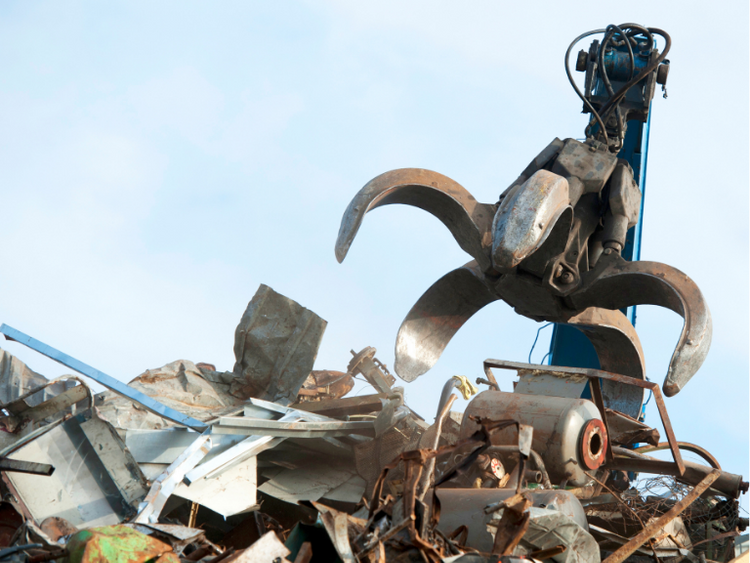Market

July 16, 2024
Leibowitz: Is protectionism working for steel?
Written by Lewis Leibowitz
Spoiler alert: I think not.
Since 2017, when then-President Donald Trump told Secretary of Commerce Wilbur Ross to initiate a “national security” investigation on imports of steel (and aluminum), those two industries have had stringent protection from import competition.
After seven years of unprecedented protection, it’s past time to assess the results.
My focus here is on the steel industry, because we know more about the interplay of market forces and government involvement. But aluminum is governed by similar forces.
First, let’s determine what the goals were when the Trump administration adopted the policy on steel that has been continued without substantial change by the Biden folks.
One priority was that the profitability of the steel industry needed to improve. Profitability surged in 2019, with the notable exception of 2020, when the COVID pandemic made a mess of the economy. But since the post-pandemic economic rebound, the profitability of steel producers has not improved much.
Another goal was to shift domestic consumption patterns away from imported steel and toward domestic steel. That has happened. In 2017, U.S. steel imports totaled about 34.6 million metric tons. The Section 232 tariffs and the China 301 tariffs reduced imports substantially in 2018 and 2019. But they have moved up since the pandemic. Last year, steel imports stood at 25 million metric tons, a reduction of 28% from the 2017 volume. That is a mark of success in the goal of reducing imports.
But, over the same period, domestic steel production, according to United Nations figures, decreased from 81.6 million metric tons to 80 million tons, a decline of about 2%.
Why am I citing United Nations statistics? Because domestic steel production statistics that square with import statistics are hard to come by. The seven-year protection has reduced both imports and domestic steel production.
The combination of reduced domestic production and reduced imports means that domestic demand for steel declined rather sharply between 2017 and 2023. Apparent aggregate demand (domestic production minus imports) has declined from 116.2 million metric tons in 2017 to 105 million in 2023. That 9.5% decline in apparent domestic demand for steel products can be laid, at least in part, in the success of the policy in raising domestic steel prices. Steel exports have been small throughout this period.
Steel industry employment has also been stagnant, declining slightly between 2017 and 2023. Steel employment has fallen below 100,000 nationwide and has not seen that number of workers since 2003.
Moreover, the success of trade protection in reducing steel imports has translated into a loss of American manufacturing jobs. Steel-using industries (such as transportation equipment, construction, capital equipment) have lost business or moved overseas themselves. Companies have shifted steel-intensive production overseas to arbitrage the price difference between steel in foreign markets and in the United States (the latter is at the high end of global prices). That explains, at least in part, the decline in U.S. demand for steel over the past seven years.
Steel industry executives see it, too. In recent comments on the proposed renewal of (and increases in) China Section 301 duties, steel trade associations are encouraging the U.S. Trade Representative to rewrite the rules regarding the country of origin of imported articles to address the shift in steel-intensive production to other countries. That is clearly an attempt to discourage the outward migration of steel-intensive manufacturing. Rewriting the rules won’t change much, though.
Up to now, the standard rules recognized in international trade agreements provide that the country of origin of imports is the country where the product was last “substantially transformed.” For example, a car produced in Indonesia using Chinese steel. The steel industry notes that Chinese steel may be used by third-country manufacturers and “substantially transformed” into cars, heavy equipment or capital machinery.
The Section 301 tariffs on Chinese-origin goods do not now apply to those imports. Nor do the Section 232 tariffs apply, because the goods are classified as cars and machinery rather than steel products. Antidumping and countervailing duties may also be avoided in this way, because the imported products are not subject to those duties that apply only to steel products.
Steel may be indirectly imported into the United States through further manufactured goods, which destroy jobs in downstream steel-consuming industries. The net effect has been to reduce demand for steel in the U.S. market. And, with the strong dollar and the relatively high prices for steel in the United States, domestic steel exports are likely to fall, too. But rewriting the origin rules will not be of much help. Witness the recent presidential proclamations imposing tariffs on steel and aluminum products from Mexico where the importers cannot prove that the steel was “melted and poured” in North America, or where aluminum was not smelted in North America.
All in all, the domestic steel industry is likely to continue to slide in profitability and employment unless something changes.
Can government policy change the outlook for steel and other domestic industries that face decline? And can those changes be enacted by Congress and signed by the President, whoever he may be?
Further, domestic industries need to become more globally competitive, and higher tariffs will encourage them not to bother.
Another approach that could be tried is massive subsidies for favored industries. If steel is a strategic commodity (and readers of this column will recall that I believe its strategic importance has declined), the government could provide capital to make steel production in the United States the envy of the world. That would take a lot of money, a lot of patience, and government involvement in assuring that this money is well-spent.
Those are all tall orders. But the capital position of many steel companies would not permit them to make the 21st-century advanced products that are available from foreign suppliers. So, success would require investments in productivity that would make U.S. steelmakers more efficient and cost-effective than their foreign competitors.
The reverse seems to be the case now. The U.S. steelmaking base, especially the blast furnace sector, has ancient and rapidly aging capital equipment. Investment in new and better equipment closing existing facilities, a politically unpopular step.
To remake steel and other declining industries, the government would need to reevaluate a lot of past assumptions, putting pressure on company managers and their unions to rethink the industry business model, which industries in other countries have done. If the government cannot do what is necessary, it will take private capital to do the job.





